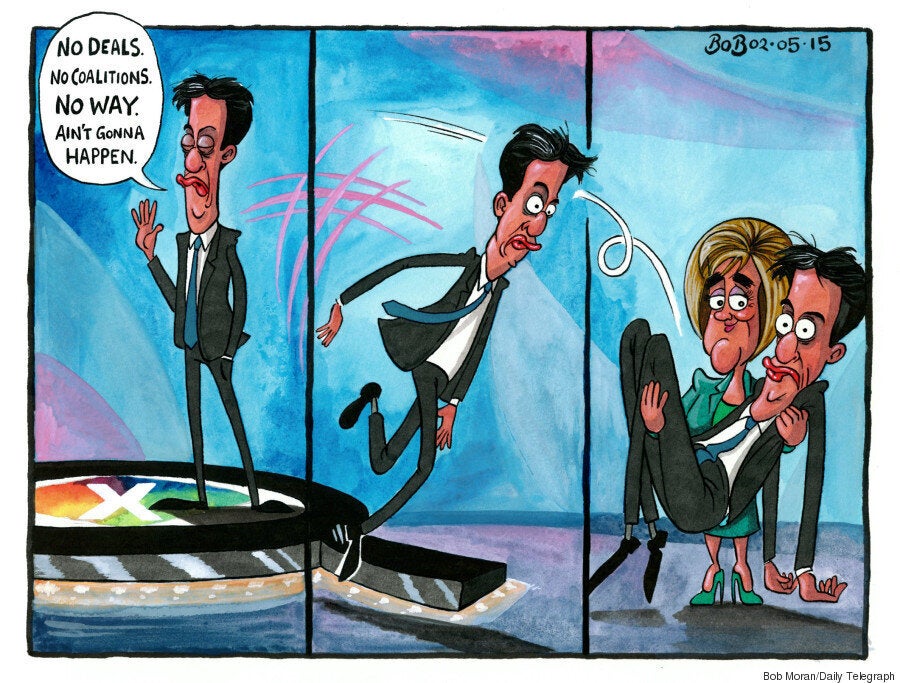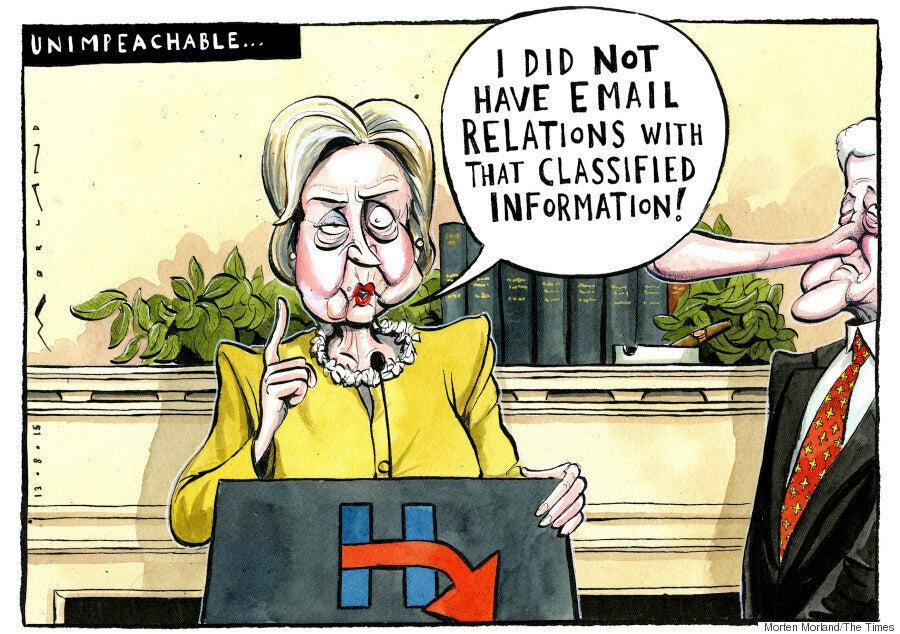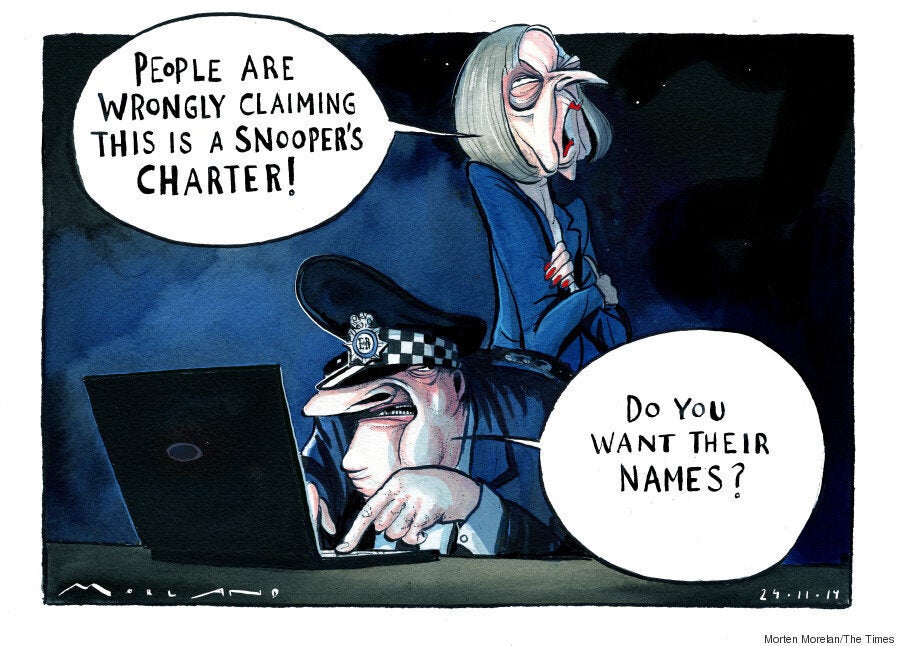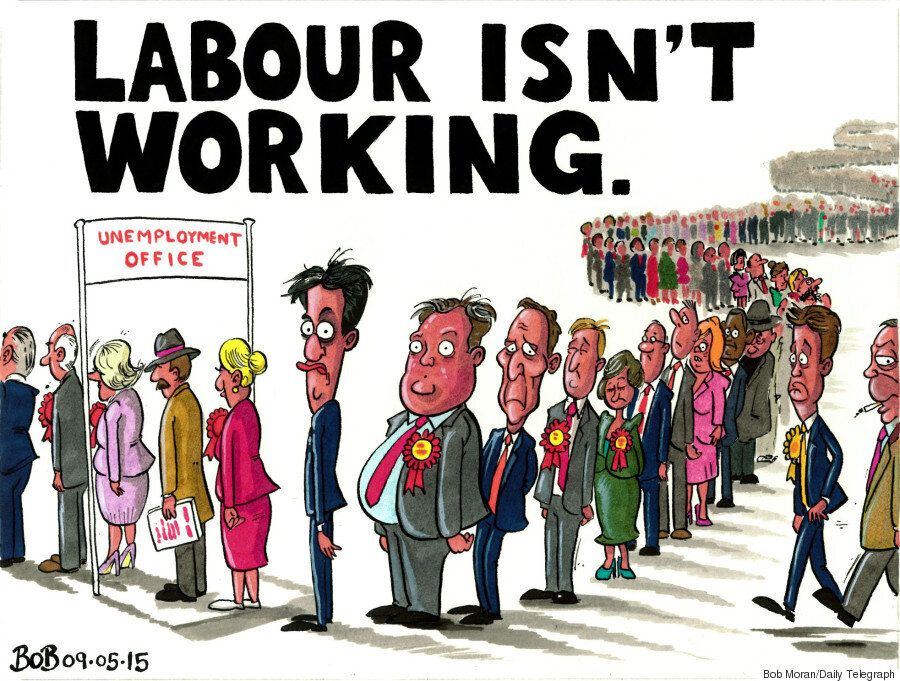If a politician admits to being hurt by how they are portrayed in a cartoon, the cartoonist is “just going to stick the knife in harder”, the author of a new book detailing the art of the artistic satirist agrees.
Tim Benson ‘Britain’s Best Political Cartoons 2015’ brings together the work featured in the national newspapers in a year that saw David Cameron win an unexpected general election victory, the Scottish independence referendum, political turmoil in Europe and Jeremy Corbyn snatch the leadership of the Labour Party.
The “stand out” cartoon of the 2015 general election, he says, is from the May 9th edition of the Daily Telegraph. The cartoon, by Bob Moran, depicts Ed Miliband and other senior Labour figures queuing at an unemployment office. “It was based on the famous Tory election poster of 1979 with the long queue of unemployed people. Nick Clegg is in there and Ed Balls. He got a very big response from that,” Benson says.
The election campaign, controlled as it was, did not provide that many banana skin moments for cartoonists. But those that came were good. And Miliband was usually on the sharp end of the cartoonists’ pencil.

The Labour leader’s “expressive face”, the “teeth that went on forever” as well as the bacon sandwich moment and the ‘Ed Stone’ did not do him any favours.
“These things are beyond parody,” Benson says. “He was quite sensitive to it.”
But Benson adds his other favourite was of David Cameron. “When Cameron’s people said he was too relaxed, he wasn’t getting het up. So he got on stage and said he’s feeling ‘bloody lively’. There is a wonderful Steve Bell cartoon of Cameron punching himself.”
Senior politicians do not care about how their politics are represented in cartoons, Benson observes. Instead any sensitivity is down to personal vanity. “Gordon Brown and Cameron have complained appearing fat,” he says.
“Brown said to one cartoonists: ‘why do you draw me so fat? The cartoonist said: ‘because you are fat’.
“Peter Brooks did a cartoon of Cameron naked with the rest of the cabinet and Cameron had the slightly larger bottom. Cameron’s people complained to The Times about it.
Christian Adams of the Daily Telegraph met Cameron at some No. 10 function and the prime minister said ‘why do you draw me so fat’. He pointed over at Michael Gove and said: ‘look, Michael is far fatter than I am’.”
You need a “skin like a rhino” to be a senior politician in the UK. And as Benson points out, Winston Churchill’s rule about cartoons should still apply. “You, as a politician, should start worrying not when they start appearing, but when they stop.”

The Internet has had a big impact on how political cartoons are viewed, Benson argues. “If you are on the left you would never ever pick up the Telegraph or The Times or the Daily Mail. And if you are on the right you would never pick up a copy of The Guardian or the Daily Mirror.
“But today with social media, Facebook and Twitter, these cartoons are reproduced and get far wider audience.”
Before, he says, cartoonists were “preaching to the converted”. Now, he says, “people are seeing how others cartoonists are really hammering the politics that they support. It’s creating more debate.”
One of the biggest changes to political cartoons over the last 20-years, Benson says, is more simple than the invention of the Internet. It is colour. Which he thinks has actually been a negative.
“I think colour distracts,” he says. “I prefer black and white. Because you spend too much time admiring the drawing itself rather than the point. The great thing about political cartoon is its immediacy. The reader will look at it for a second or two. not more and they will get it in that time. That’s the fun. Colour slightly distracts.”

If Miliband was a godsend for cartoonists. Cameron was more difficult. “They all struggled with Cameron because he was so young. He didn’t have a big nose or big ears. It was a struggle. Steve Bell, The Guardian’s cartoonist, resorted to depicting the prime minister with a condom over his head “because of the pinkness the smoothness”.
And as for Nick Clegg, all the cartoonists were “pleased to see the back of him” because he had such a “bland face”. At one recent cartoon awards, Bell turned to Clegg, who had been presenting an award, to explain why he had drawn the Lib Dem leader as a “bag of sick”.
“He turned around to Clegg and said: ‘it was nothing personal, it had something to do with your complexion’.”
If Cameron and Clegg’s blandness made them tricky to draw. Jeremy Corbyn has come to the rescue. “I think Corbyn is great,” Benson says. “The problem with recent political leaders is they have been too young. It’s very hard to caricature young people as it is with children and women.
“The more lived in the face, the older the politician, the more features become accentuated. Corbyn is much older than the likes of Miliband , Clegg and Cameron.
“Corbyn has these tags of identity; the beard, he’s got cap with red star on it. They are really enjoying him.”
Why are women hard to caricature? “Because their skin is a lot smoother, their noses aren’t as big or their ears, they don’t go bald. They don’t get fat in the way men get fat,” Benson says.
“Cartoons of Mrs Thatcher for example, for years they all struggled with her to get a good likeness.”
They must be dreading the thought of Theresa May being elected Conservative Party leader then. “She is getting on, so she is somewhat easier,” Benson says

The political cartoon, Benson says, is a particular British specialty. Particularly when compared to the “fairly prudish” American attempts. “We have wonderful cartoonists. They are fantastic quality. Nowhere in the world has the depth of quality that we produce in this country.”
“I think British cartoons have far more freedom than than cartoonist elsewhere in the world,” he says.
In part he puts this down to their national profile. In the United States, political cartoonists are rarely national. Their work is well known within one state, but not outside.
Being a political cartnoonist for a national newspaper, is, Benson laughs, a “ridiculous profession to try and earn a living from”. There are only five or six full-time jobs in the entire country. The others have to fill in when the main artists are away.
How then, do up-and-comers crowbar their way into one of those jobs? “It’s basically dead men’s shoes,” he says.
“Peter Brooks [The Times] keeps saying Morten Morland is waiting for him to die. Morten is a ‘young up-and-coming cartoonist’. He is in his mid 40s.
Does Benson have a favourite cartoonist included in the book? “If I tell you who my favourite is the other 22 won’t ever talk to me ever again."
